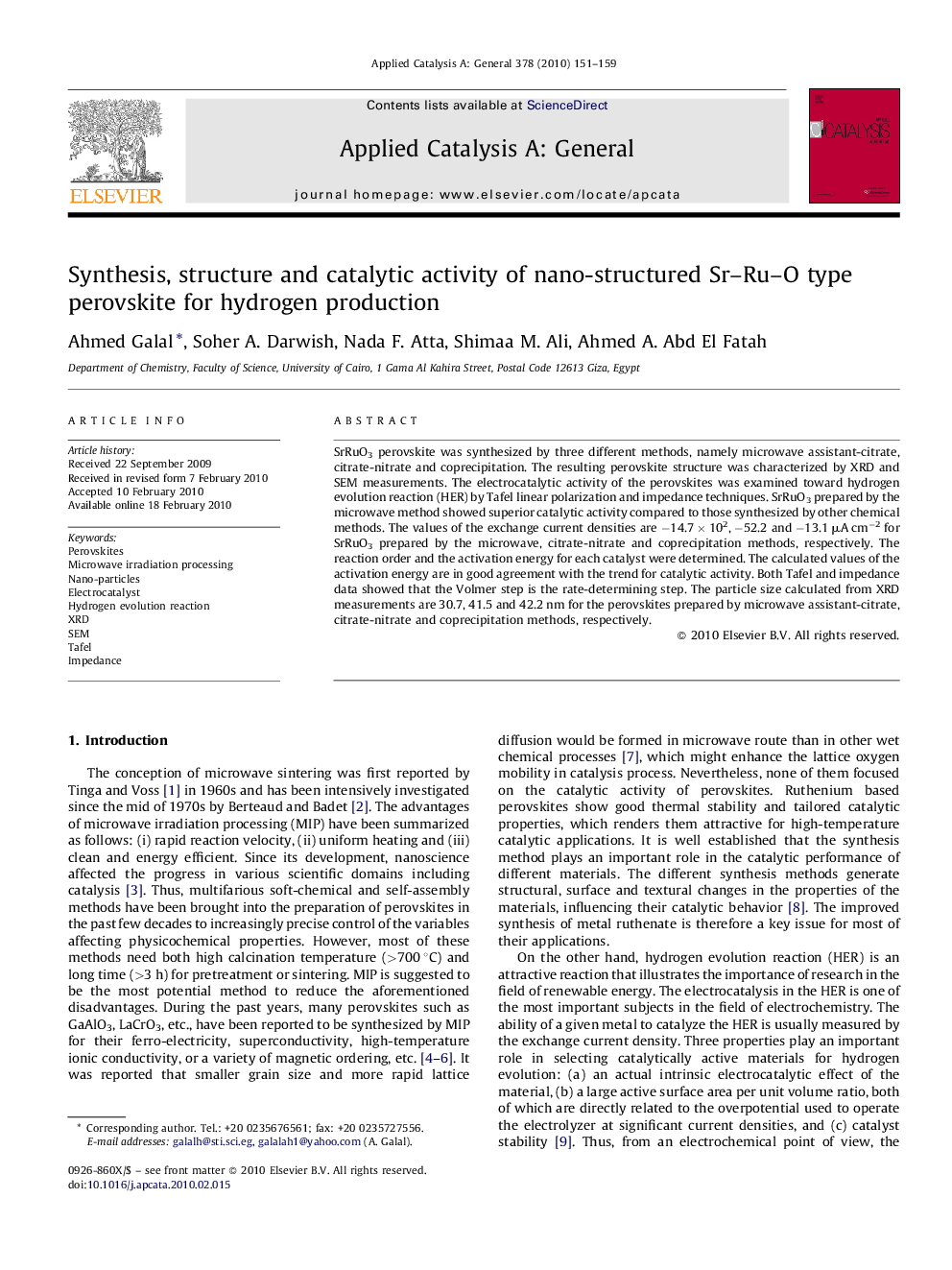| کد مقاله | کد نشریه | سال انتشار | مقاله انگلیسی | نسخه تمام متن |
|---|---|---|---|---|
| 42191 | 45914 | 2010 | 9 صفحه PDF | دانلود رایگان |

SrRuO3 perovskite was synthesized by three different methods, namely microwave assistant-citrate, citrate-nitrate and coprecipitation. The resulting perovskite structure was characterized by XRD and SEM measurements. The electrocatalytic activity of the perovskites was examined toward hydrogen evolution reaction (HER) by Tafel linear polarization and impedance techniques. SrRuO3 prepared by the microwave method showed superior catalytic activity compared to those synthesized by other chemical methods. The values of the exchange current densities are −14.7 × 102, −52.2 and −13.1 μA cm−2 for SrRuO3 prepared by the microwave, citrate-nitrate and coprecipitation methods, respectively. The reaction order and the activation energy for each catalyst were determined. The calculated values of the activation energy are in good agreement with the trend for catalytic activity. Both Tafel and impedance data showed that the Volmer step is the rate-determining step. The particle size calculated from XRD measurements are 30.7, 41.5 and 42.2 nm for the perovskites prepared by microwave assistant-citrate, citrate-nitrate and coprecipitation methods, respectively.
The present work deals with the synthesis of a novel type of perovskites that is used as electrode materials for the electrocatalytic production of hydrogen. The new catalyst prepared by microwave-assisted citrate methods showed excellent improvement in the production rate of hydrogen.Figure optionsDownload high-quality image (56 K)Download as PowerPoint slide
Journal: Applied Catalysis A: General - Volume 378, Issue 2, 30 April 2010, Pages 151–159